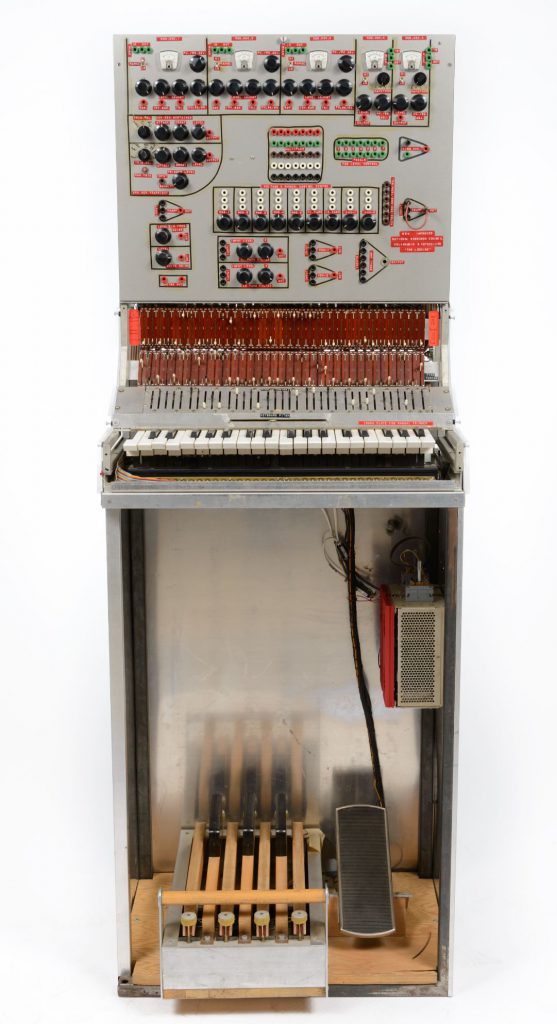Artefacts
Polyphone
Polyphone
(Accession Number: 1986.0004)
Dimensions: Height = 168cm, Length = 61cm, Width = 55cm
Condition: Mechanical and electronic components in very good condition. Was restored to full functionality in 2017, with only minor intervention.
The Polyphone is a performance-oriented musical instrument designed by Canadian physicist Hugh Le Caine and built in the National Research Council of Canada’s (NRC) Electronic Music (ELMUS) Lab in Ottawa, Canada. It is the world’s first known keyboard-based electronic synthesizer that allowed for multiple notes to be played at once. Its name, Polyphone, is derived from this polyphonic capacity. It permitted musicians, for the first time, to play a synthesizer as they would a piano or organ: with two-hand accompaniment and multi-note chords. The Polyphone was completed a decade before commercially-available analogue synthesizers could afford a similar polyphonic experience.
The Polyphone is comprised of a three-octave, touch-sensitive keyboard, with a patch-based control panel located above. It is also accompanied by a unique foot-pedal system that permits the musician to make pre-determined changes to the instrument’s sound while both hands are engaged in playing. To utilize this function, the musician would first patch a desired configuration into the control module’s patch bay, and then route this configuration down to one of the foot-pedals. This would allow the musician to engage and control the desired function (e.g. introducing a modulation effect, or a change in the overall timbre of the sound) by applying pressure to the foot-pedal during playback. A separate foot-pedal was also wired for expressive dynamic (volume) control.
The 37 notes of the keyboard each had separate wave and pitch controls, in the form of individual sliders located above each key, which permitted tuning of the instrument prior to playing. This was necessary for maintaining standard tuning (as the instrument tended to fall out of tune between playing sessions), but it also afforded the possibility of experimenting with unconventional tunings (much as guitar players can do by adjusting the tension of their guitar strings using the instrument’s tuning pegs). Le Caine’s 1971-72 composition Paulution demonstrates the instrument’s capacity for pitch-bending and vibrato within a dense texture that juxtaposes several different waveforms.
The Polyphone was built in 1970. It was designed for composer Paul Pedersen of the McGill University Electronic Music Studio in Montreal, Canada. Established in 1964, McGill’s studio was – after the NRC’s ELMUS Lab and the University of Toronto Electronic Music Studio (UTEMS) – the third electronic music studio established in Canada.
In 1986 McGill University donated the Polyphone to the National Museum of Science and Technology in Ottawa, Canada (now Ingenium – Canada’s Museums of Science and Innovation) where it resides today. The instrument is currently on display in the Canada Science and Technology Museum’s Sound by Design gallery in Ottawa.
© 2015 – 2024 Humboldt-Universität zu Berlin






